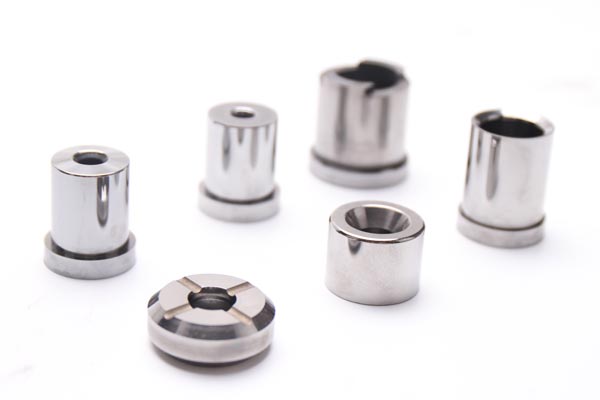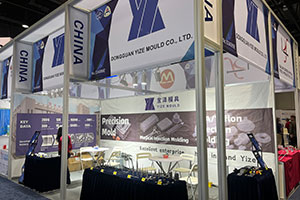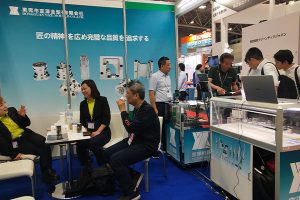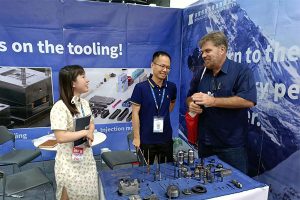Detailed Explanation of the Customization Process for Tungsten Carbide Dies
In the field of precision manufacturing, tungsten carbide dies have become core tools for numerous production lines due to their high hardness, excellent wear resistance, and outstanding thermal stability. However, […]
In the field of precision manufacturing, tungsten carbide dies have become core tools for numerous production lines due to their high hardness, excellent wear resistance, and outstanding thermal stability. However, the customization process of these dies involves multiple intricate steps, each requiring precise operations and technical support. Therefore, a comprehensive understanding of the customization process for tungsten carbide dies is of paramount importance. This article will provide an in-depth analysis of this process, offering practical references for relevant practitioners.
I. Requirement Analysis Phase: Precise Foundation Building for Customization
The initial step in the customization of tungsten carbide dies is requirement analysis. This phase mainly focuses on product characteristics, production requirements, and die lifespan.
Our factory business: carbide parts, mold parts, medical injection molds, precision injection molds, teflon PFA injection molding, PFA tube fittings. email: [email protected],whatsapp:+8613302615729.
- Analysis of Product Characteristics: It is essential to fully grasp the basic information of the product, such as its dimensions, shape, and material, as well as the precision and surface quality requirements. For instance, dies for high-precision electronic product casings have extremely strict requirements for dimensional tolerances and surface roughness, which directly influence the subsequent design direction.
- Consideration of Production Requirements: Clearly define the production batch and cycle to arrange the die design and production schedule reasonably. Mass production demands dies with high efficiency and stability, while small-batch customization places more emphasis on flexibility and rapid response.
- Planning for Die Lifespan: Determine the die lifespan requirements based on the product’s service life and replacement frequency. Dies intended for long-term use require more durable material selection and structural design.
Through meticulous requirement analysis, a solid foundation can be laid for subsequent die design and manufacturing.
II. Design Phase: The Perfect Integration of Creativity and Technology
Based on the requirement analysis, the design phase commences, which includes several key steps.
- Structural Design: Design a reasonable die structure according to the product characteristics and production requirements. For example, dies for parts with complex shapes need to have unique cavity and parting surface designs to ensure the smooth forming of the products.
- Material Selection: Choose appropriate tungsten carbide materials based on the die’s operating environment and lifespan requirements. For instance, W18Cr4V is suitable for high-load and high-wear scenarios, while W6Mo5Cr4V2 excels in terms of toughness and thermal stability.
- Processing Technology Design: Plan a reasonable processing technology, including rough machining, finish machining, and heat treatment, based on the die structure and material characteristics. The sequence and parameter settings of different processing steps directly affect the final performance of the die.
- Drawing Preparation: Prepare detailed drawings that incorporate the designed die structure, materials, and processing technologies to provide precise guidance for subsequent manufacturing.
The design phase is a crucial part of the customization process, requiring a comprehensive consideration of multiple factors to ensure the die meets production requirements.

III. Material Preparation Phase: Source Control for Quality Assurance
After the design is completed, the material preparation phase begins, with the following main steps.
- Material Procurement: Purchase materials according to the types and specifications specified in the design drawings, ensuring that the material quality meets the design requirements. Select reliable suppliers and strictly control the material source.
- Material Inspection: Conduct quality inspections on the purchased materials, testing indicators such as chemical composition and physical properties. For example, use spectral analysis to detect the chemical composition and a hardness tester to measure the physical properties.
- Material Cutting: Cut the tungsten carbide materials according to the dimensional requirements in the design drawings to form blanks that meet the specifications. The cutting accuracy directly affects the subsequent processing quality.
The material preparation phase lays the material foundation for subsequent manufacturing and is an important link in ensuring die quality.
IV. Manufacturing Phase: A Dual Test of Skill and Precision
With the materials ready, the manufacturing phase commences. This is one of the most complex and time-consuming phases in the customization process.
- Rough Machining: Use cutting tools to remove the excess material from the blanks, forming the basic die shape. During this phase, it is necessary to reasonably control the cutting amount to avoid generating excessive stress and deformation.
- Heat Treatment: Perform heat treatment on the rough-machined dies. Through processes such as heating, holding, and cooling, the internal structure of the steel is altered to enhance its hardness and toughness. Different heat treatment processes, such as quenching and tempering, have significant impacts on the die’s performance.
- Finish Machining: After heat treatment, conduct finish machining operations, including turning, grinding, and electrical discharge machining, to improve the die’s precision and surface quality. Finish machining requires the use of high-precision equipment and processes to ensure dimensional accuracy and surface finish.
- Assembly and Debugging: Assemble the various components and conduct debugging to ensure that the die operates normally and meets the production requirements. During the assembly process, attention should be paid to the fit accuracy and clearance adjustment of the components.
The manufacturing phase requires precise operations and technical support, with strict control over the processing accuracy and quality of each step.
V. Inspection and Acceptance Phase: Strict Quality Control
After the manufacturing is completed, the inspection and acceptance phase begins, with the following main steps.
- Dimensional Inspection: Use measuring tools to measure the dimensions of the die, ensuring that the dimensional accuracy meets the design requirements. For example, use a coordinate measuring machine to detect the dimensions of dies with complex shapes.
- Surface Quality Inspection: Check the surface quality of the die, ensuring that indicators such as surface finish and roughness meet the standards. Surface quality affects the appearance and service performance of the products.
- Functional Inspection: Conduct functional tests on the die, simulating the actual production process to ensure that it operates normally and meets the production requirements. For example, perform trial molding production to check the quality of the formed products.
The inspection and acceptance phase is a crucial link in ensuring die quality. Only dies that pass strict inspections can be put into use.
VI. Delivery and Usage Phase: Thoughtful Continuation of Services
After the die passes the inspection and acceptance, it is delivered to the customer for use. During the delivery, provide the customer with detailed operating instructions and maintenance guidelines to help them use and maintain the die correctly. At the same time, offer after-sales service support to promptly solve any problems encountered by the customer during use, such as die failure repairs and technical consultations.
VII. Conclusion: The Value Enhancement of the Customization Process
The customization process of tungsten carbide dies is complex and precise, requiring a comprehensive consideration of various factors to ensure the quality and performance of the final product. A deep understanding of each step in the process helps practitioners master the customization technologies and methods, providing strong support for the development of the precision manufacturing industry.
Related Posts
- Future Development Trends and Market Demands of Tungsten Carbide Die
- Analysis of the Customization Cycle of Tungsten Carbide Dies
- Analysis of the Application Characteristics of Tungsten Carbide Dies in Electronic Product Manufacturing
- What Are the Key Points for Cleaning and Maintaining Tungsten Carbide Dies?






